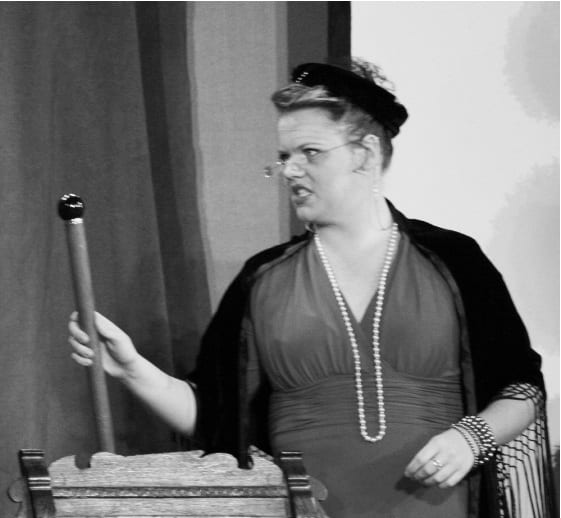
If no girl in the land was fit to be queen, then who would reign supreme? On Oct. 18 and 19, St. Olaf’s Lyric Theatre production Albert Herring concocted the answer: a boy, naturally.
Set in the 1900s in an English village, the opera follows Lady Billows and her shivering May Day committee as they search for a May Queen. The problem? Every girl in the village has either committed a dishonorable act or lost their virginity and has thus been disqualified from coronation.
The committee must instead turn to crowning Albert Herring, a clean-cut, hardworking and passive greengrocer, the May King. Following a humiliating coronation, however, a drunken Albert slinks away to break every honorable vow that came with his flowered crown so that he may never be re-selected. His disappearance and the eventual revelation of his actions achieve their purpose of liberating Albert and frightening away the committee.
The characters of the comedic opera, and the actors and actresses who take on these varied roles, entertained with contrasting personalities. Lady Billows, played by Hannah Hanssen ’14, intimidated even the walls of Urness Recital Hall with her death glare, while Albert, played by Devin Hair ’14, elicited sympathy with his gentle nature.
Each of the diverse roles captured a unique facet of life in the 1900s English countryside and made the historical world relatable. I rolled my eyes at the mischief of Sid Harrison Hintzsche ’16, empathized with Nancy Maria Coyne ’15, quaked in fear with the committee Katie Miller ’14, Andrew Curtis ’15, William Holt ’16 and Eric Broker ’15, mourned with Albert’s mother Alice Berry ’14 and sang along with the rowdy children Sarah Hammel ’15, Danielle Long ’16 and local elementary student Peder Lindell.
Hair was equal parts sweet and misunderstood – a pushover who reluctantly molded to his mother’s will. His doleful glances of submission and near abuse of apples revealed a lonely and bored soul who was secretly inspired to step outside of societal norms. Never before has a straw hat woven with flowers seemed so very near a tragedy.
Hanssen, on the other hand, instilled an air of command and control in the midst of the May Day chaos. With a dramatic flick of her black shawl, she had the world at her feet. If her movements were not expressive enough, her piercing glare could inspire an Olympic sprinter to race faster.
Hanssen’s fellow cast-members also appreciated her performance.
“Sopranos in their forties would find this role challenging,” Hair said. “Even during the first run-throughs, she was graceful.”
The strong group chemistry was truly the show’s highlight.
“Working with this cast was an absolute blessing,” Hair said. “Without the amount of talent in the cast, we couldn’t have put on an opera of this level. Love and tears went into this play.”
This performance was Hair’s final performance in lyrical theater at St. Olaf, following a history of successful roles.
But before the curtain could go up on opening night, there were many tasks to finish. According to Curtis, there were three major challenges in putting together the production: music, character development and set changes.
The setting reflected a classic style of decoration with a few twists. Plant hedges cut into geometric designs, long elegant tables cloaked in ivory tablecloths and candle-lit lanterns decorated the stage.
All of the show’s music was personally re-orchestrated by conductor and music-arranger George Fergus to fit a small chamber orchestra. The seven-member orchestra was intrepid and skilled, supporting the play with a talented performance.
Some of the music’s difficulty can be attributed to this opera being “bitonal,” meaning that musical parts in two different keys occurred simultaneously. This feature was recognizable in the large-group numbers, such as the scene when the council decided on a May King. Though temporarily dizzying for listeners, each conversation’s general meaning did come through.
For all kinds of audience members, Acts II and III, when the action increased and became more relatable, offered the chance to get lost in this engaging performance. For first-time opera viewers, this production offered a solid introduction to the genre.
pilkingt@stolaf.edu
Photo Credit: MADISON VANG/MANITOU MESSENGER

